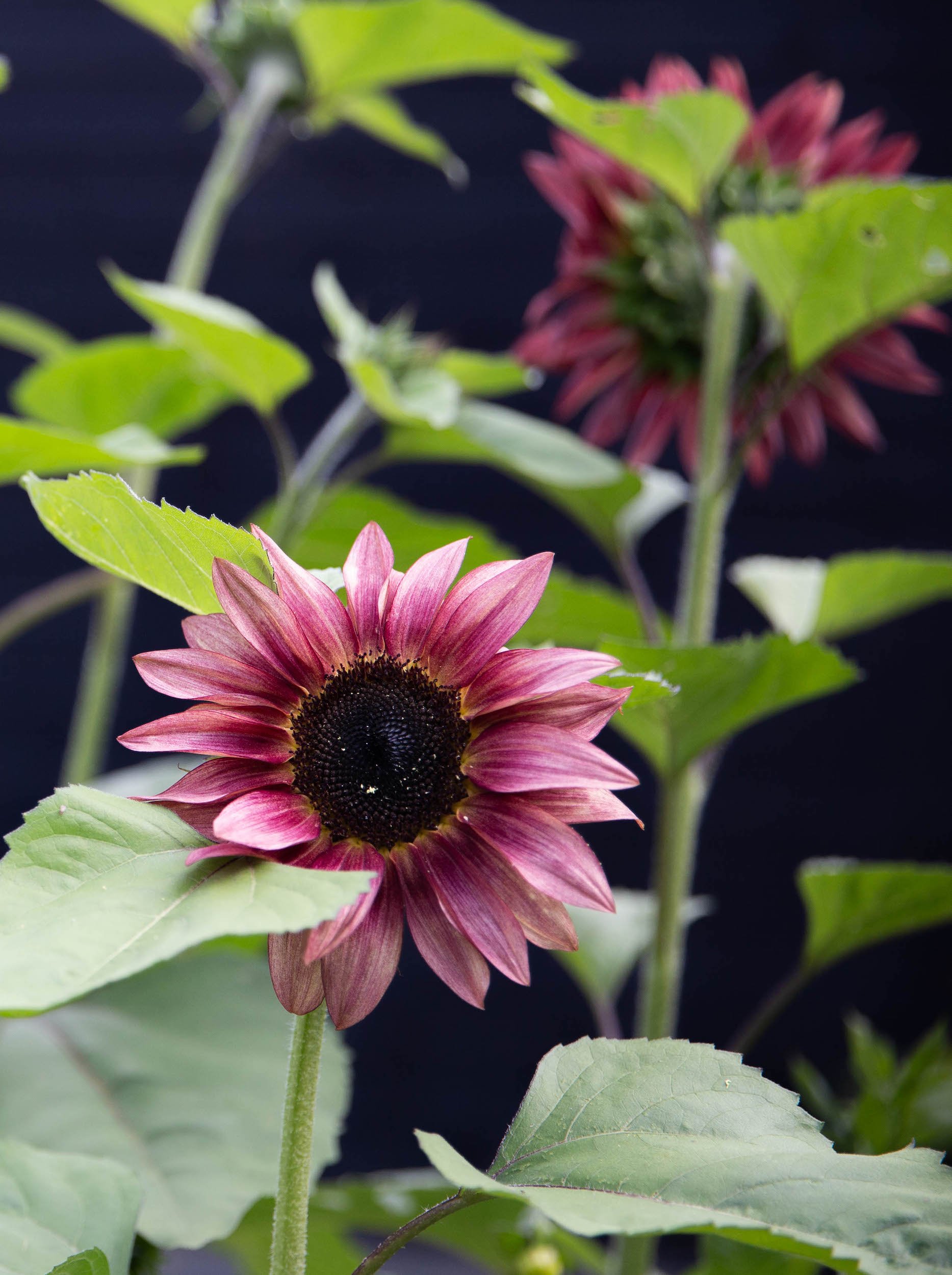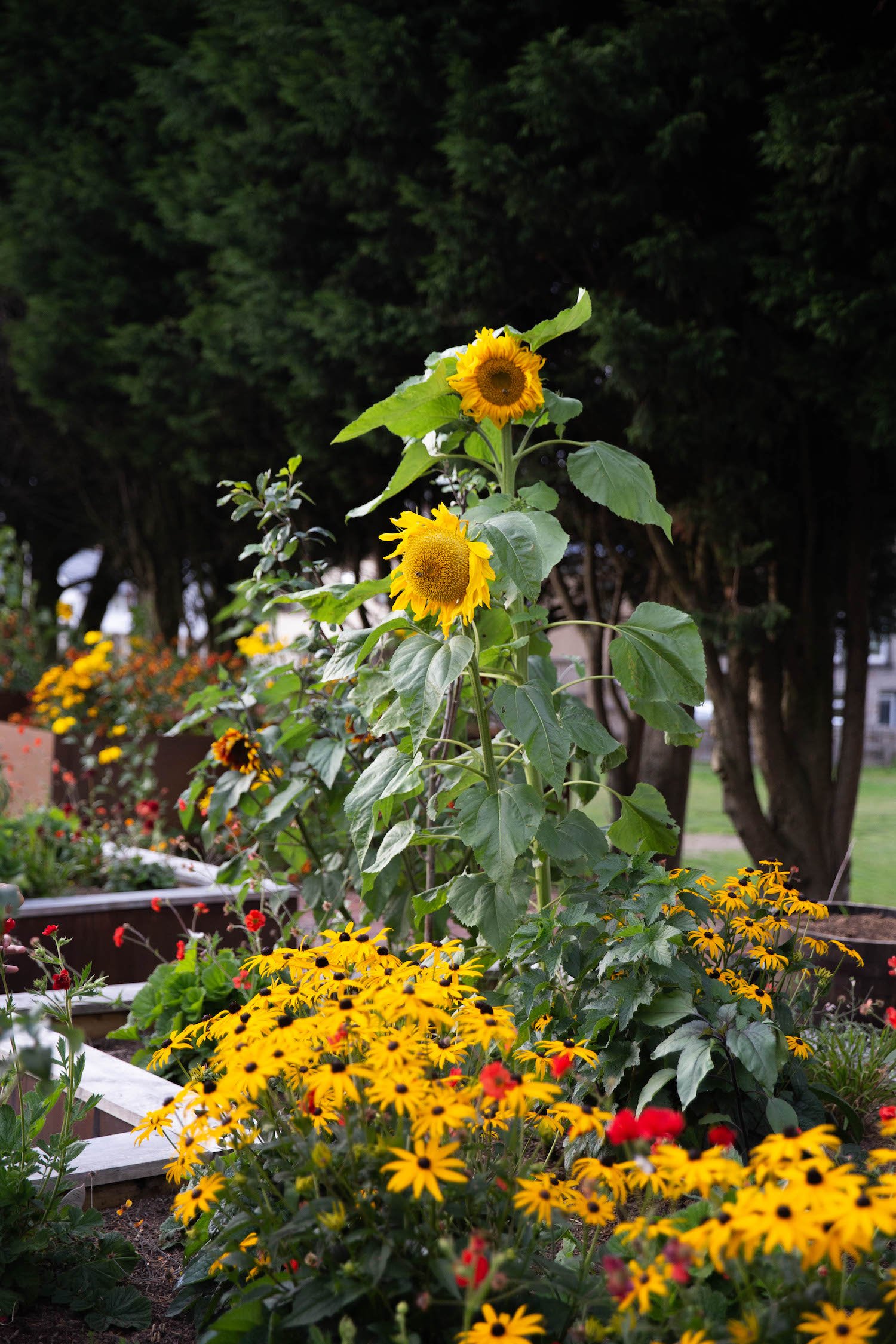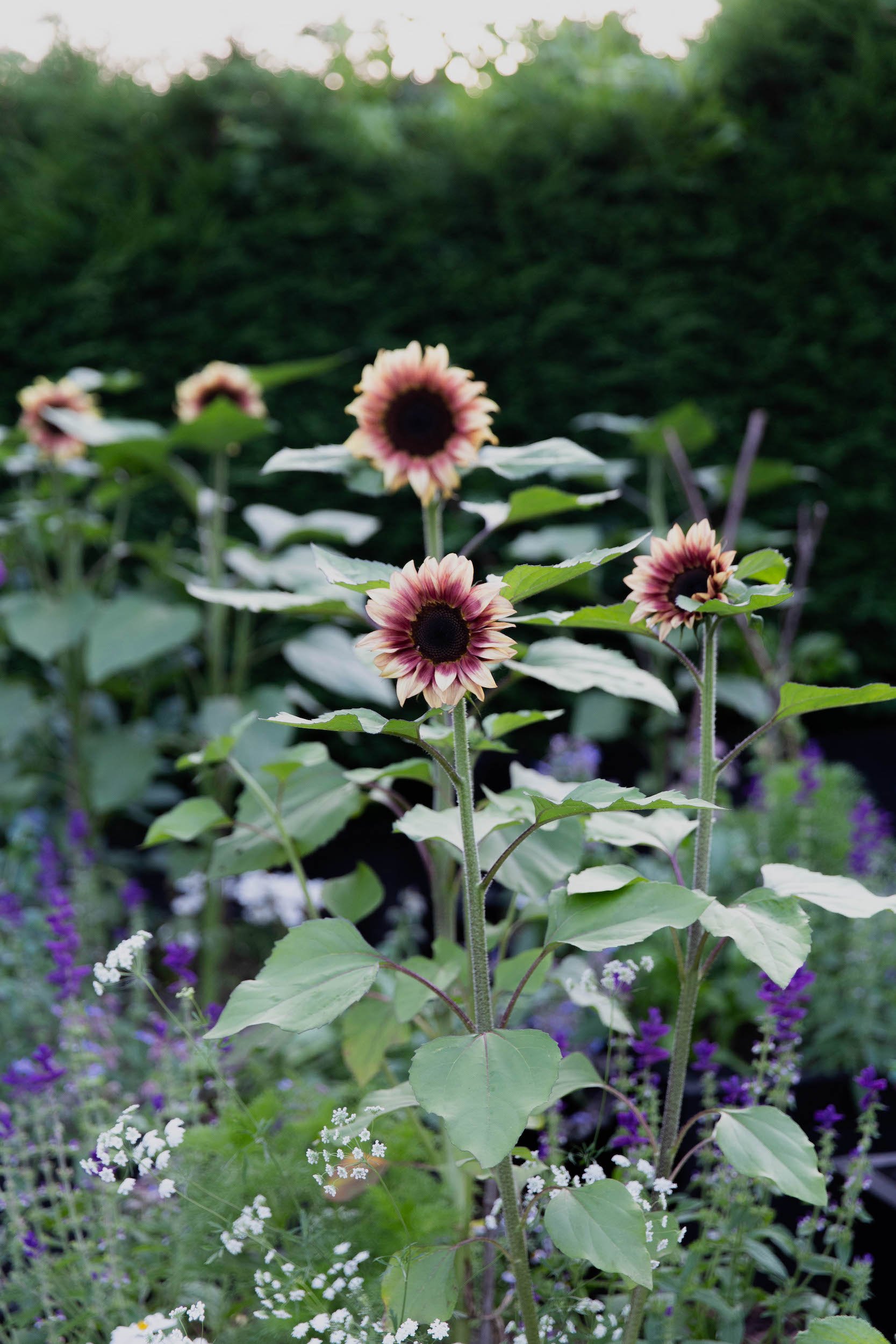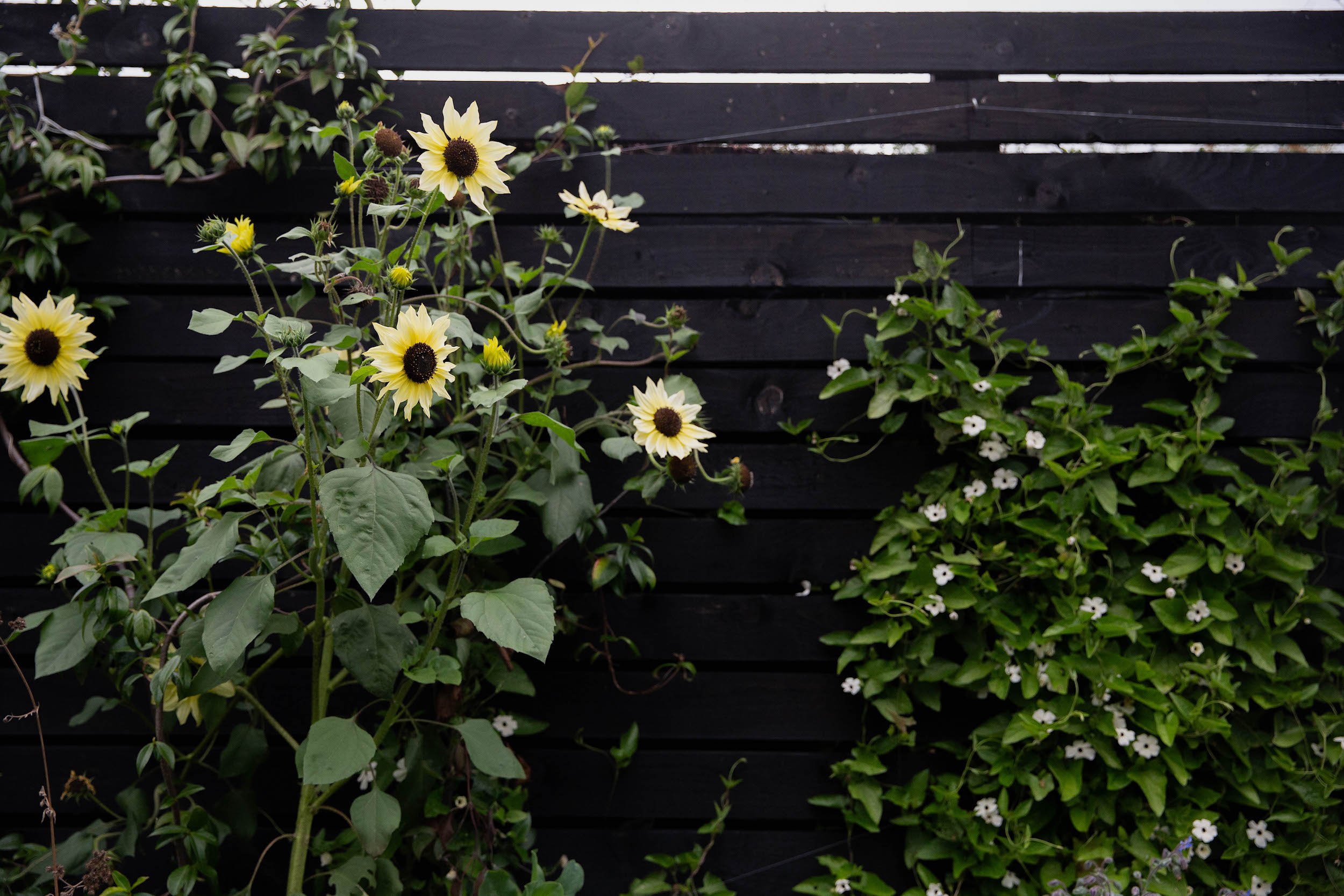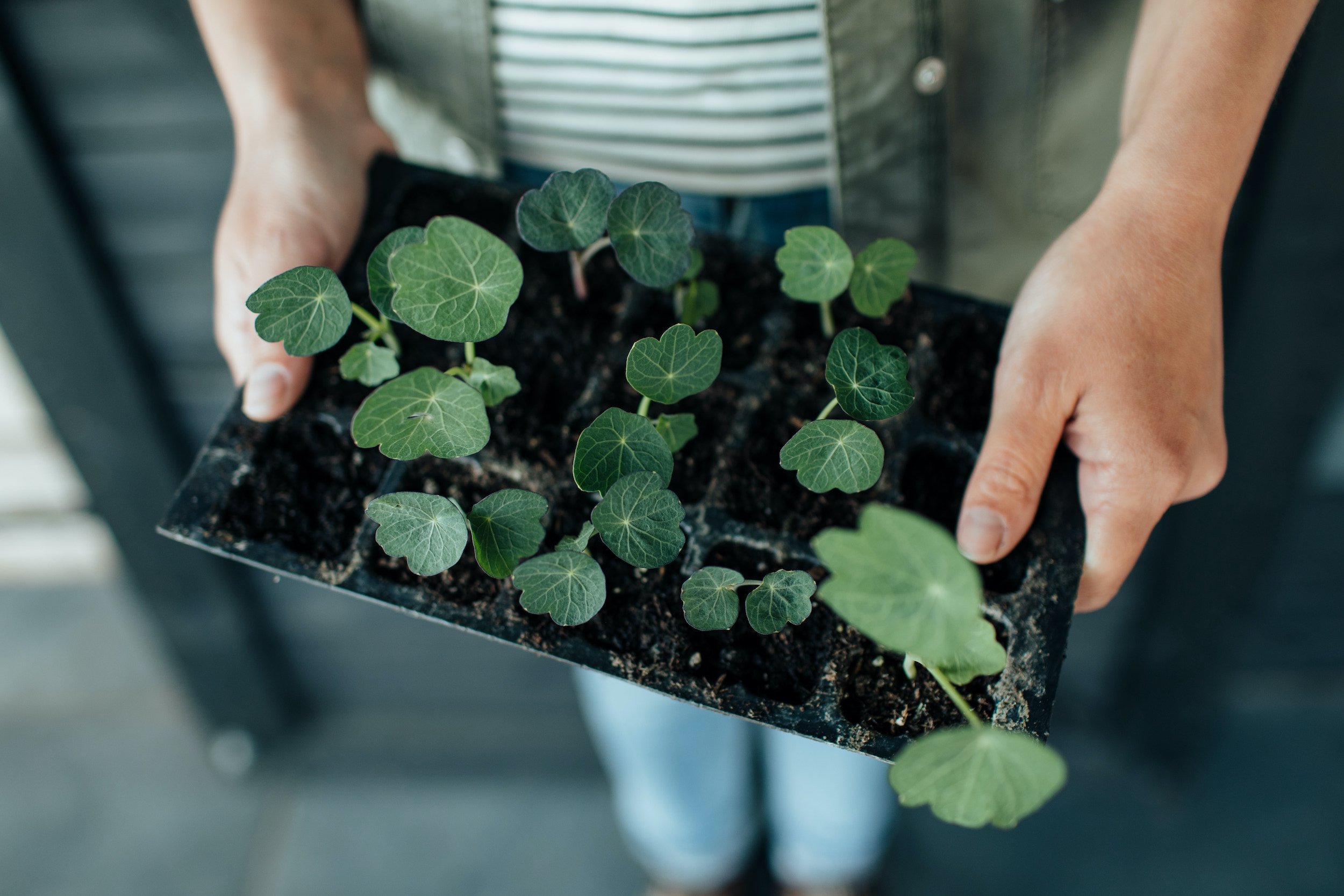Plant guide: sunflowers
Sunflowers are an essential in our garden. Cheerful, statuesque, vibrant and with their heads turning always towards the sun, they make a huge statement from just a few seeds sown in the Spring.
The traditional yellow sunflowers always draw a smile, but we have a soft spot for some of the newer cultivars. These tend to grow less tall, but come in more muted colour palettes of dusky pinks and purples, and are perfect as a cut flowers in the vase.
Botanical name: Helianthus annuus
Plant type: Annual. Sunflowers are sown from seed, germinate, grow, flower and then die within one season.
Growing conditions: The clue is in the name! Sunflowers need plenty of sun. Grow them in a sunny spot, with plenty of space for their height (especially the taller traditional yellow varieties.) Sunflowers are well known for their immense ability to put on a lot of growth in a short space of time, so make sure they are in a spot that isn’t too cramped.
They do grow well in pots, but will need a pot of a decent size, and plenty of watering and feeding once they really get going.
Helianthus annuus ‘Ms Mars’
Sunflowers growing alongside colourful perennials make a real statement in mixed planting
Helianthus annuus ‘Pro Cut Plum’
How to sow:
Sunflowers are grown from seed and are one of the easiest seeds to sow, because of their size. (This makes them a great choice to sow with kids.)
It’s best to sow the seeds individually: one per pot, pushed downwards about an inch below the soil. Water well and place in a sunny spot. You can also sow directly into the soil outside in mid Spring once the last frost has passed.
See our guide to sowing seeds for more detailed information.
Grow with:
Because they grow so tall, sunflowers can look striking just growing on their own, or against a dark coloured fence or wall (as in the photo below) where they really stand out.
We also like to pair the smaller varieties with other vibrant plants that flower at the same time, such as heleniums, salvia or flowering carrots.
Care:
If sowing from seed inside, you may need to pot on the growing seedling a couple of times before putting it in the final position.
As sunflowers grow so fast, they need lots of water and – if not growing in the soil – regular feeding. We use a liquid seaweed fertiliser for ours.
Our favourite varieties:
Helianthus annuus ‘Pro Cut Plum’ us a lovely soft-coloured sunflower with dusky pink petals, that are darker towards the centre.
‘Ms Mars’ is a similar colour palette, but with darker, more purple coloured petals.
Uses:
Sunflowers are great as cut flowers as their rigid stems mean they don’t flop in a vase.
Of course, the seeds can also be eaten or used as bird feed (in fact, the birds might beat you to it!) If you’re planning to harvest the seeds, leave them to dry on the sunflower head as long as possible. The blooms will fade and turn brown, and the seeds will increase in size, becoming fatter. Once they feel loose in their positions, they are ready to harvest. This is usually easiest done by cutting the whole head back and then shaking and rubbing the seed head to release all of the seeds.
To feed birds, you can cut the flower head off, dry it, and then hang it back out again as a ready-made bird feeder. We hang up a couple of the seedheads in our chicken run, and our chickens love to peck at them…
Related articles:
Five faves: late flowering plants for some other late Summer bloomers


